The answer is straightforward however, it is quite widespreadis can polyester be breathable? You’ll likely find polyester on gym clothes, T-shirts or sports jerseys, as well as your comfy sheets. Polyester is a popular fabric used by clothing makers. However, a lot of consumers are reluctant to buy products made from polyester since they fear that the fabric will trap sweat and heat.
This guide will help you understand the haze about polyester. We’ll explore the breathable qualities of polyester and how it handles sweat and how it works in different conditions. When you’re done reading this post, you’ll have the information needed in order to take an informed choice on when you should go for polyester, and when to give up on it.
Table of contents
- What Does “Breathable” Mean in Clothing?
- How Polyester Is Made: A Quick Look
- Is Polyester Breathable Compared to Natural Fabrics?
- Why Polyester Traps Sweat and Heat
- Polyester in Hot Weather: What You Need to Know
- Is Polyester Breathable for Activewear and Sports?
- Polyester vs Cotton: Comfort Face-Off
- Polyester vs Nylon: Which Feels Cooler?
- Can Polyester Be Made More Breathable?
- Does Moisture-Wicking Polyester Help?
- How Polyester Feels Against the Skin
- Polyester in Cold Weather: A Surprising Twist
- Myths and Facts About Polyester Breathability
- Is Polyester Breathable for Bedding and Linens?
- How Fabric Blends Affect Breathability
- When Polyester Works Well: Best Use Cases
- Tips for Staying Comfortable in Polyester
- Washing Polyester: Does It Affect Breathability?
- Polyester and Skin Irritation: Is It Real?
- Sustainable Alternatives to Polyester
- Should You Wear Polyester in Summer?
- Polyester in Fashion: Form vs Function
- Designer Opinions on Polyester Breathability
- Conclusion
- FAQs
What Does “Breathable” Mean in Clothing?
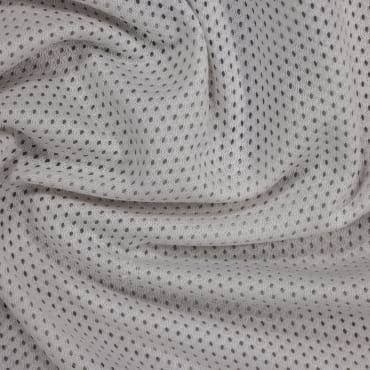
To know if it’s breathable for polyester, it’s important to understand the concept of “breathable” means in terms of clothing. The most breathable fabrics allow air to flow through the fabric, allowing your body to expel sweat and heat. This airflow is vital to maintaining your comfort, particularly in humid or warm weather.
If clothing is breathable, sweat quickly evaporates off your skin. This helps not only regulate the body’s temperature, but can also help prevent that sticky, damp feeling. However clothes that hold heat and moisture can cause uncomfortableness, body smell or even irritation to the skin. The ability to breathe is the unspoken hero of clothing that is comfortable.
How Polyester Is Made: A Quick Look

Manufacturers create polyester from petroleum. Unlike natural fabrics like wool or cotton, which come from animals and plants, polyester is a human-made, chemically engineered material. The process begins by the refinement of petroleum into pellets of plastic. The pellets are then melted and made into long fibers which are then woven into fabric.
This process produces fibers that are soft, sturdy and not prone to shrinking or wrinkling. These qualities make polyester a popular choice for clothing and sportswear. The tightly woven fibers are also prone to restricting airflow. This, naturally directly influences how breathable the fabric. Manufacturers create polyester from petroleum. Unlike natural fabrics like wool or cotton, which come from animals and plants, polyester is a human-made, chemically engineered material. This process produces fibers that are soft, sturdy and not prone to shrinking or wrinkling. These qualities make polyester a popular choice for clothing and sportswear. The tightly woven fibers are also prone to restricting airflow. This, naturally directly influences how breathable the fabric.
Is Polyester Breathable Compared to Natural Fabrics?
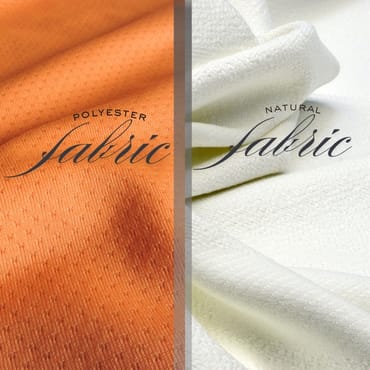
When we look at polyester in comparison to natural fabrics such as cotton bamboo, or linen Polyester is typically not as good in the area of breathability. Natural fabrics have loose open fibers that let air circulate more freely. As an example cotton allows your skin to breathe, absorbing moisture and permits it to evaporate to keep you dry and cool.
However, its compact weave traps heat and restricts the airflow. However, this doesn’t mean that polyester is always a bad option. Modern manufacturing techniques and technologies have significantly improved the breathability of polyester in recent years.
Why Polyester Traps Sweat and Heat
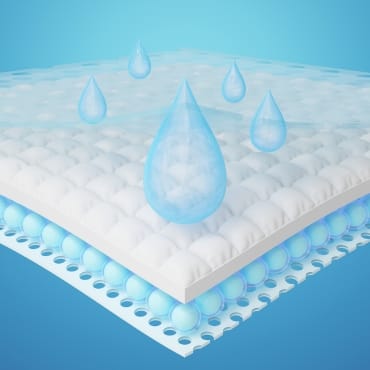
The primary reason polyester holds sweat and heat is due to its hydrophobic properties. It is because polyester doesn’t absorb water. If you sweat when using polyester clothing, sweat tends to remain on your skin since it repels moisture, rather than absorbing it.
Furthermore, polyester can retain body heat because of its thick weaving and porous materials. This could create the “greenhouse” effect, where heat builds up between you and your fabric. This means that you might feel warmer, sweat more and may feel damp and uncomfortable for longer durations.
Polyester in Hot Weather: What You Need to Know
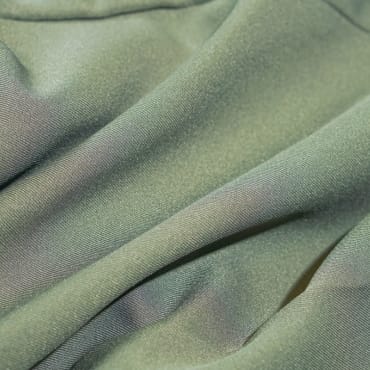
In hot weather, wearing polyester is a matter of caution. Pure, untreated polyester is not the best choice for environments with high temperatures. It’s not designed to allow air to circulate and can also trap sweat, causing discomfort. However, not all polyesters are the identical.
Thanks to advances in fabric engineering, many manufacturers now design polyester blends specifically for warmer temperatures. They include fabrics with moisture-wicking properties and mesh fabrics that draw sweat off the skin and promote sweat evaporation. When shopping for warm-weather clothes, choose polyester items labeled as ‘moisture-wicking’ or ‘breathable.’
Is Polyester Breathable for Activewear and Sports?

Within the realm of sportswear polyester is the most sought-after material. However, its popularity doesn’t stem from its basic shape. It shines because of the way it’s improved. The top athletic brands have created lightweight polyester fabrics, which include mesh panels, ventilation zones as well as sweat-wicking and sweat-wicking materials.
This makes polyester a great option for exercise. It’s lightweight, does not weigh you down it dries fast and usually includes stretchy materials like spandex that help with movements. When properly modified it is breathable, which helps athletes stay cool and dry even in the midst of intense physical exercise.
Polyester vs Cotton: Comfort Face-Off

The term “comfort” is subjective, but we can nonetheless deconstruct certain facts. Cotton is soft, breathable and incredibly absorbent. It’s gentle for skin with sensitive sensitivity and is ideal for relaxing or wearing for everyday wear in mild temperatures. However, cotton retains moisture, making it feel spongy and heavy when you exercise.
Polyester, on the other hand is more dries and holds its shape for longer. This makes it more durable and effective for those who lead active lives. However, when it comes to pure breathability cotton is the superior hand. If you’re trying to decide between them, think about your level of activity and the environment. Read more about cotton vs polyester
Polyester vs Nylon: Which Feels Cooler?
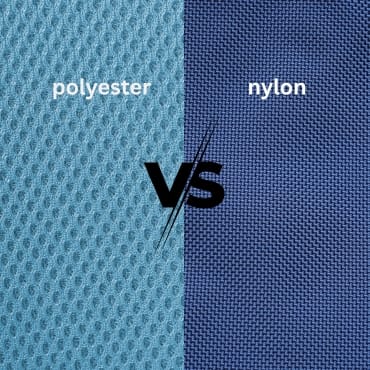
Both nylon and polyester are synthetic materials, however they are different in the heat. Nylon is a better insulator of warmth because of its more tightly weave and smoother surface. It also absorbs scents better than polyester.
Although it isn’t perfect it is somewhat more flexible than nylon. Manufacturers often combine it with other fabrics to boost performance, and it keeps you cooler in hot temperatures. In humid conditions neither of them can provide the same breathability of linen or cotton, however polyester is the more durable option between both.
Can Polyester Be Made More Breathable?
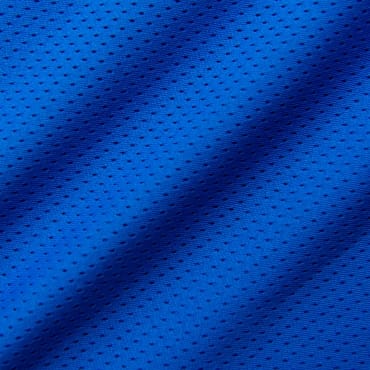
Yes absolutely. Polyester’s breathability can be improved by many methods. Manufacturers can create microfiber polyester that has fine threads that allow for better airflow.Another popular option is mesh polyester, where manufacturers weave tiny holes into the fabric to allow airflow.
Additionally, blending polyester with breathable fibres such as bamboo or cotton can help make an even more supple fabric. These blends typically combine the toughness and quick-drying qualities of polyester while offering the ease and breathability of natural fibers.
Does Moisture-Wicking Polyester Help?

Moisture-wicking polyester won’t improve airflow directly however it can improve how you feel the fabric. This kind of polyester draws sweat away from your body and distributes it over the surface which allows it to dry faster.
It’s a sign that you’re feeling drier and drier, even though the fabric isn’t airy or ventilated. The technology of moisture-wicking can make polyester more breathable with regard to comfort though airflow remains a bit limited.
How Polyester Feels Against the Skin
Polyester has a distinct feel depending on how it’s processed. Certain types are hard and plasticky, whereas others are silky and smooth. Texture is a key factor in the sense of breathability. A rough polyester weave tends to hold heat, whereas finer weaves are cooler more comfortable and are less irritating.
Polyester with soft touch is becoming increasingly prevalent particularly in premium apparel and loungewear. The newer versions lessen friction, allowing skin to breathe more easily and feel fresher all day.
Polyester in Cold Weather: A Surprising Twist
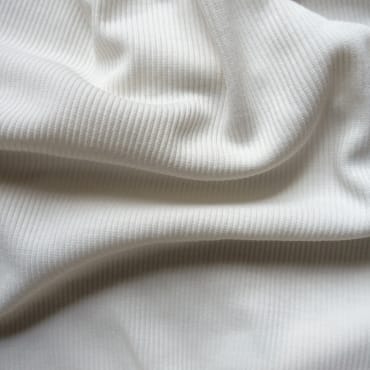
It is interesting to note that polyester is particularly effective in cold conditions. Although in summer, it can feel warm but in winter, its ability to trap heat is an advantage. Polyester retains body heat and doesn’t absorb water making it an excellent option for layering cold weather clothing.
Thermal wear, base layers and insulated jackets typically use fabric with breathable lined linings that regulate the temperature of water without losing warmth. In this case the restricted breathability works to your advantage.
Following the point we left off, here’s the remainder of your enhanced article that includes full pages and SEO-friendly format.
Myths and Facts About Polyester Breathability
Let’s debunk some common misconceptions about breathability and polyester. A popular myth states that polyester causes constant sweating. The truth is that the amount of sweat you sweat is dependent on your level of activity temperature, as well as your personal body chemistry rather than the fabric itself.
Another myth claims that polyester can’t be breath-able. This is not true. The advancements in the field of fabric technology have resulted in more breathable polyester fabrics specifically designed for casual and athletic use. Some people also believe organic fabrics always are superior. While linen and cotton be more breathable, they also absorb moisture and dry quickly, making them unsuitable for rainy or active situations. Polyester may outperform the other fabrics in a variety of situations.
Is Polyester Breathable for Bedding and Linens?

In the case of sheets, breathability can be essential for a restful night. The standard polyester sheets are not very breathable. They are known to hold body heat and moisture, which makes the sheets unsuitable for those who sleep hot. This could cause disruption to sleep and excessive heat during hot nighttime.
However it is true that not every polyester bedding is made to be the same. Certain microfiber polyester sheets are made to be softer and cooler. While they’re not as humid as bamboo or cotton but these sheets can provide an improved experience. To maximize breathability and moisture control natural fibers can still beat polyester in this area.
How Fabric Blends Affect Breathability
Mixing polyester with other fabrics can significantly increase how comfortable and breathable it feels. When paired to cotton will become soft and more fluid. These blends are durable and also allow greater airflow.
Similar to bamboo-polyester blends, bamboo-polyester blends provide cooling benefits as well as improved water management. Blends of linen and polyester, which are often seen in summer clothing produce lightweight and breathable clothes. The ultimate breathability of a mixture depends greatly on the ratio of fabric. A shirt made of 80percent polyester will appear more synthetic than one that has only 40 percent.
When Polyester Works Well: Best Use Cases
Despite its shortcomings in its raw form it shines in many real-world applications. During rainy days, polyester garments provide quick-drying protection. It is more resistant to water than cotton and is lightweight even when you are soaked.
When working out it’s a great choice because it doesn’t store sweat. Athletes depend on the breathable fabric to remain clean and dry during rigorous training. For those who swim, polyester swimsuits offer the ability to resist chlorine and retain shape. The winter months, the insulation capabilities make it ideal for outerwear as well as base layers.
Travelers love polyester as well. The fabric is resistant to wrinkles and is perfect to carry light without appearing like a sloppy mess.
Tips for Staying Comfortable in Polyester
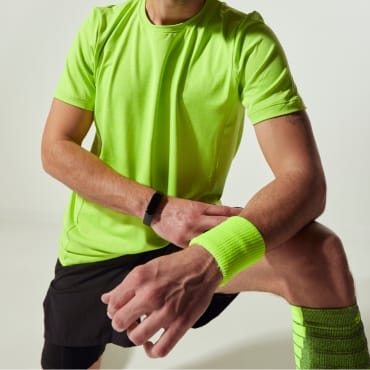
If you’re planning to wear polyester and want to help it to work for you by implementing some basic guidelines. The first is to choose loose-fitting clothing that doesn’t adhere tight around your body. This allows air to move between you and fabric.
Then, search for clothing that is marked as ventilated or moisture-wicking. These are made to perform better. It is also possible to add polyester to bamboo or cotton base layers to improve the feeling of. Make sure to choose lighter weaves and steer clear of heavy blends of polyester in hot climates, to keep cool.
Washing Polyester: Does It Affect Breathability?
Yes, the way you wash polyester can be a factor. As time passes, strong detergents and softeners for fabric can accumulate onto the surfaces of fibres. The result is a layer which blocks the tiny airways inside the fabric, decreasing its ability to breathe.
To avoid this, wash polyester with cold water using gentle detergent. Do not use fabric softeners which could clog the weave. By adding a little white vinegar in the rinse cycle will help get rid of the dust and allow airflow to be restored. Clean, well-maintained and maintained polyester is more efficient and more comfortable to breathe.
Polyester and Skin Irritation: Is It Real?
The fabric is not known to cause allergic reactions. But it can cause irritation for certain people, particularly when the fabric collects sweat, or rubs skin in areas of high friction. The problem isn’t with the fabric, but how it deals with the moisture.
A tight-fitting, poorly ventilated or tightly-fitting polyester can lead to eruptions, especially during hot temperatures. Making sure you choose the most breathable fabric while wearing in the proper setting can help prevent these issues. Choose blends that are softer and more loose cuts for sensitive skin.
Sustainable Alternatives to Polyester
Because polyester is made from petroleum-based resources that are not renewable and coal, it has triggered environmental issues. It also requires several hundred years to degrade in landfills. However, we have more sustainable options.
Recycling polyester–made using plastic bottles as well as other waste materials–offers an eco-friendly alternative that doesn’t sacrifice the strength or the ability to manage moisture. Other breathable and sustainable fabrics include Tencel, bamboo (lyocell) organic hemp, and cotton. These options are comfortable and sustainability.
Should You Wear Polyester in Summer?
In summer, wearing polyester can be a gamble. If the fabric is thick and tightly woven or not treated, it could retain sweat and heat making it uncomfortable during hot summer days. But, blends of breathable polyester specifically designed for summer will keep you cool.
If you’re shopping for clothing that is suitable for warm weather Look for labels that talk about the breathability of mesh panels, mesh, or properties that help to wick moisture away. If you sweat frequently or reside in a humid environment blend fabrics or natural fibers might be better.
Polyester in Fashion: Form vs Function
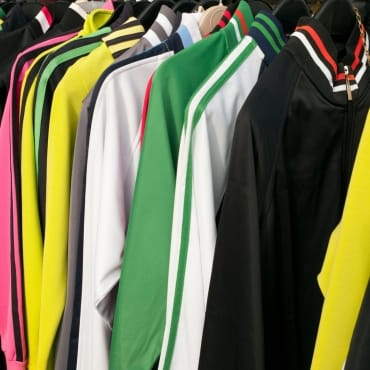
Fashion labels love polyester. Why? because it keeps its shape, isn’t wrinkled and can be fashioned into vibrant, long-lasting shades. It’s the reason it’s in a myriad of fashionable dress shirts, blazers, and everyday shirt.
But, fashion isn’t only about appearances, but also comfort, too. Designers often mix cotton with polyester or add air-tight linings to ease discomfort. Although unmodified polyester might not be suitable for hot conditions, its versatility in fashion keeps it popular.
Designer Opinions on Polyester Breathability
A lot of top designers recognize that polyester isn’t a particularly air-conditioned option in its own. However, they continue make use of it due to its durability, affordability and adaptability. Instead of using 100 percent polyester, they mix the fiber with other natural materials or incorporate designs that improve airflow.
Side vents as well as open weaves, are typical solutions for making clothes made of polyester more comfortable to wear in warmer temperatures. Designers are becoming quite imaginative in balancing style and ease of wearing. Read more with detailed Premium Polyester Fabric Guide: Uses, Benefits & Care Tips
Conclusion
Let’s address the most important question once and for all- are polyester’s breathable? The fact is that traditional polyester isn’t breath-able. It entraps heat but does not retain sweat. However, that doesn’t mean it is unsuitable or uncomfortable.
With the right design, whether you’re using mesh fabrics, moisture-wicking, or a blend of other fibers, the breathable polyester can compete with natural fabrics in terms of comfort and performance. Polyester is great for training or travel, for rain protection, or winter layering. If you’re just lounging in the sun you should choose linen, cotton or bamboo.
The crucial factor is a well-chosen selection. Select the appropriate fabric for the appropriate situation and you’ll remain cool and dry regardless of what.
FAQs
Only if it has mesh ventilation or moisture-wicking features. Standard polyester is not suitable for extreme heat.
Yes, untreated polyester can trap sweat. But moisture-wicking polyester handles it much better.
It depends. Polyester dries faster and resists wrinkles. Cotton breathes better and feels softer.
Yes, especially in tight garments or warm conditions. Look for breathable polyester if you sweat a lot.


